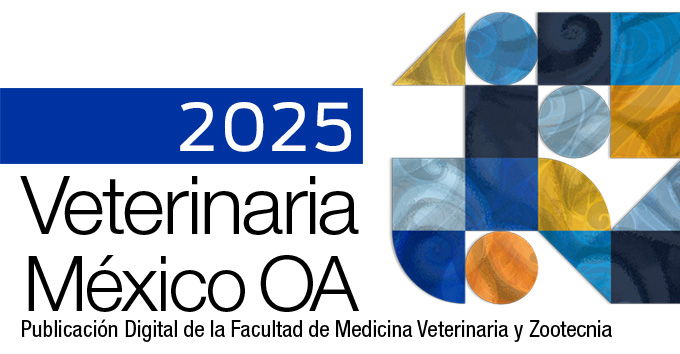Role of carbonic anhydrase in the anti-inflammatory mechanism of diosmin and hesperidin in rats
Main Article Content
Abstract
Flavonoids such as diosmin and hesperidin produce antinociceptive and anti-inflammatory effects, potentially involving the inhibition of carbonic anhydrase (CA) as a mechanism of action. It is believed that CA inhibition helps reduce inflammation by improving symptoms such as pain, redness, swelling, warmth, and loss of mobility in the affected area. We showed that diosmin and hesperidin produced an anti-inflammatory effect involving inhibition of CA. The study was conducted on male Wistar rats by measuring the time spent licking and the number of shakings after the 1 % formalin was administered to the plantar area of the hind limb. Treatments were as follows: vehicle, diosmin, hesperidin, meloxicam, acetazolamide, sulfonamide, and combinations of inhibitors with the flavonoids. Subsequently, measurements in both hind limbs were carried out to evaluate the degree of inflammation. The results indicated that diosmin and hesperidin at 100 and 316.2 mg/kg decreased the time-spent licking and number of shakings in phase 2 of the 1 % formalin test, whereas when administered in combination with acetazolamide and sulfonamide at 100 mg/kg, the anti-inflammatory effect of the flavonoids was reversed. These findings suggest that CA’s activity plays an important role in the antinociceptive and anti-inflammatory effects of the flavonoids diosmin and hesperidin.
Article Details
References
Damon M, Flandre O, Michel F, Perdrix L, Labrid C, Crastes de Paulet A. Effect of chronic treatment with a purified flavonoid fraction on inflammatory granuloma in the rat. Study of prostaglandin E2 and F2 alpha and thromboxane B2 release and histological changes. Arzneimittelforschung. 1987;37(10):1149‒1153.
Rao YK, Fang S-H, Tzeng Y-M. Antiinflammatory activities of flavonoids and a triterpene caffeate isolated from Bauhinia variegata. Phytotherapy Research. 2008;22(7):957-962. doi: 10.1002/ptr.2448.
Mittal M, Siddiqui MR, Tran K, Reddy, S. P., Malik AB. Reactive oxygen species in inflammation and tissue injury. Antioxidants & Redox Signaling. 2014;20(7):1126‒1167. doi: 10.1089/ars.2012.5149.
Ji G, Li Z, Neugebauer V. Reactive oxygen species mediate visceral pain-related amygdala plasticity and behaviors. Pain. 2015;156(5):825‒836. doi: 10.1097/j.pain.0000000000000120.
Wang J, Cochran V, Abdi S, Chung JM, Chung K, Kim HK. Phenyl N-t-butylnitrone, a reactive oxygen species scavenger, reduces zymosan-induced visceral pain in rats. Neuroscience Letters. 2008;439(2):216‒219. doi: 10.1016/j.neulet.2008.05.018.
Ferraz CR, Carvalho TT, Manchope MF, Artero NA, Rasquel-Oliveira FS, Fattori V, et al. Therapeutic potential of flavonoids in pain and inflammation: mechanisms of action, pre-clinical and clinical data, and pharmaceutical development. Molecules. 2020;25(3):762. doi: 10.3390/molecules25030762.
Zheng Y, Zhang R, Shi W, Li L, Liu H, Chen Z, et al. Metabolism and pharmacological activities of the natural health-benefiting compound diosmin. Food & Function. 2020;11(10):8472‒8492. doi: 10.1039/d0fo01598a.
Carballo-Villalobos AI, González-Trujano ME, Pellicer F, Alvarado-Vásquez N, López-Muñoz FJ. Central and peripheral anti-hyperalgesic effects of diosmin in a neuropathic pain model in rats. Biomedicine & Pharmacotherapy. 2018;97:310‒320. doi: 10.1016/j.biopha.2017.10.077.
Bertozzi MM, Rossaneis AC, Fattori V, Longhi-Balbinot DT, Freitas A, Cunha FQ, et al. Diosmin reduces chronic constriction injury-induced neuropathic pain in mice. Chemico-Biological Interactions. 2017;273:180‒189. doi: 10.1016/j.cbi.2017.06.014.
Supuran CT. Carbonic anhydrases: novel therapeutic applications for inhibitors and activators. Nature Reviews Drug Discovery. 2008;7(2):168‒181. doi: 10.1038/nrd2467.
Mishra CB, Kumari S, Angeli A, Bua S, Tiwari M, Supuran CT. Discovery of benzenesulfonamide derivatives as carbonic anhydrase inhibitors with effective anticonvulsant action: design, synthesis, and pharmacological evaluation. Journal of Medicinal Chemistry. 2018;61(7):3151‒3165. doi: 10.1021/acs.jmedchem.8b00208.
Taslimi P, Caglayan C, Gulcin İ. The impact of some natural phenolic compounds on carbonic anhydrase, acetylcholinesterase, butyrylcholinesterase, and α-glycosidase enzymes: an antidiabetic, anticholinergic, and antiepileptic study. Journal of Biochemical and Molecular Toxicology. 2017;31(12):e21995. doi: 10.1002/jbt.21995.
Carballo-Villalobos AI, González-Trujano ME, Pellicer F, López-Muñoz FJ. Antihyperalgesic effect of hesperidin improves with diosmin in experimental neuropathic pain. BioMed Research International. 2016;2016(1):8263463. doi: 10.1155/2016/8263463.
Asiedu M, Ossipov MH, Kaila K, Price TJ. Acetazolamide and midazolam act synergistically to inhibit neuropathic pain. Pain. 2010;148(2):302‒308. doi: 10.1016/j.pain.2009.11.015.
Carta F, Supuran CT, Scozzafava A. Sulfonamides and their isosters as carbonic anhydrase inhibitors. Future Medicinal Chemistry. 2014;6(10):1149‒1165. doi: 10.4155/fmc.14.68.
Sarkhel S. Evaluation of the anti-inflammatory activities of Quillaja saponaria Mol. saponin extract in mice. Toxicology Reports. 2016;3:1‒3. doi: 10.1016/j.toxrep.2015.11.006.
Bharani S, Naik A, Parija S, Panda S. Meloxicam induced toxicopathology studies in Wistar rats. Indian Journal of Animal Research. 2019;54(3):363‒366. doi: 10.18805/ijar.B-3766.
Robert A, Nezamis JE, Lancaster C, Hanchar AJ. Cytoprotection by prostaglandins in rats: prevention of gastric necrosis produced by alcohol, HCl, NaOH, hypertonic NaCl, and thermal injury. Gastroenterology. 1979;77(3):433‒443. doi: 10.1016/0016-5085(79)90002-7.
Wheeler-Aceto H, Cowan A. Standardization of the rat paw formalin test for the evaluation of analgesics. Psychopharmacology. 1991;104(1):35‒44. doi: 10.1007/bf02244551.
Tjølsen A, Berge OG, Hunskaar S, Rosland JH, Hole K. The formalin test: an evaluation of the method. Pain. 1992;51(1):5‒17. doi: 10.1016/03043959(92)90003-t.
McCall WD, Tanner KD, Levine JD. Formalin induces biphasic activity in C-fibers in the rat. Neuroscience Letters. 1996;208(1):45-48. doi: 10.1016/0304-3940(96)12552-0.
Khalil NY, Aldosari KF. Meloxicam. In: HG Brittain, editor. Chapter Six - Meloxicam, Profiles of Drug Substances, Excipients and Related Methodology, 45. Riyadh, Saudi Arabia: Academic Press; 2020. pp. 159‒197. ISSN 1871-5125, ISBN 9780128203231.
Euchenhofer C, Maihöfner C, Brune K, Tegeder I, Geisslinger G. Differential effect of selective cyclooxygenase-2 (COX-2) inhibitor NS 398 and diclofenac on formalin-induced nociception in the rat. Neuroscience Letters. 1998;248(1):25‒28. doi: 10.1016/S0304-3940(98)00325-5.
Serafini M, Peluso I, Raguzzini A. Flavonoids as anti-inflammatory agents. Proceedings of the Nutrition Society. 2010;69(3):273‒278. doi: 10.1017/s002966511000162x.
Bouskela E, Cyrino FZGA, Lerond L. Effects of oral administration of different doses of purified micronized flavonoid fraction on microvascular reactivity after ischaemia/reperfusion in the hamster cheek pouch. British Journal of Pharmacology. 1997;122(8):1611‒1616. doi: 10.1038/sj.bjp.0701554.
Vabeiryureilai M, Lalrinzuali K, Jagetia GC. Chemopreventive effect of hesperidin, a citrus bioflavonoid in two stage skin carcinogenesis in Swiss albino mice. Heliyon. 2019;5(10):e02521. doi: 10.1016/j.heliyon.2019.e02521.
Boonpawa R, Spenkelink A, Punt A, Rietjens IMCM. Physiologically based kinetic modeling of hesperidin metabolism and its use to predict in vivo effective doses in humans. Molecular Nutrition & Food Research. 2017;61(8):1600894. doi: 10.1002/mnfr.201600894.
García Meijide JA, Gómez-Reino Carnota J. Fisiopatología de la ciclooxigenasa-1 y ciclooxigenasa-2. Revista Española de Reumatología. 2000;27(1):33‒35.
Supuran CT. Carbonic anhydrases: novel therapeutic applications for inhibitors and activators. Nature Reviews Drug Discovery. 2008;7(2):168‒181. doi: 10.1038/nrd2467.
Margheri F, Ceruso M, Carta F, Laurenzana A, Maggi L, Lazzeri S, et al. Overexpression of the transmembrane carbonic anhydrase isoforms IX and XII in the inflamed synovium. Journal of Enzyme Inhibition and Medicinal Chemistry. 2016;31(sup4):60‒63. doi: 10.1080/14756366.2016.1217857.
Supuran CT. Carbonic anhydrase inhibition and the management of neuropathic pain. Expert Review of Neurotherapeutics. 2016;16(8):961‒968. doi: 10.1080/14737175.2016.1193009.
Steen KH, Steen AE, Reeh PW. A dominant role of acid pH in inflammatory excitation and sensitization of nociceptors in rat skin, in vitro. Journal of Neuroscience. 1995;15(5):3982‒3989. doi: 10.1523/jneurosci.15-05-03982.1995.
Supuran CT. Carbonic anhydrase versatility: from pH regulation to CO2 sensing and metabolism. Frontiers in Molecular Biosciences. 2023;10:1326633. doi: 10.3389/fmolb.2023.1326633.
Supuran CT. Carbonic anhydrase inhibition with natural products: novel chemotypes and inhibition mechanisms. Molecular Diversity. 2011;15(2):305‒316. doi: 10.1007/s11030-010-9271-4.
Karioti A, Carta F, Supuran CT. Phenols and polyphenols as carbonic anhydrase inhibitors. Molecules. 2016;21(12):1649. doi: 10.3390/molecules21121649.
Aggul AG, Uzun N, Kuzu M, Taslimi P, Gulcin I. Some phenolic natural compounds as carbonic anhydrase inhibitors: an in vitro and in silico study. Archiv der Pharmazie. 2022;355(6):2100476. doi: 10.1002/ardp.202100476.
Kılıcaslan S, Arslan M, Ruya Z, Bilen Ç, Ergün A, Gençer N, et al. Synthesis and evaluation of sulfonamide-bearing thiazole as carbonic anhydrase isoforms hCA I and hCA II. Journal of Enzyme Inhibition and Medicinal Chemistry. 2016;31(6):1300‒1305. doi: 10.3109/14756366.2015.1128426.
Espinosa L Sierra MP. Anhidrasa carbónica, nuevas perspectivas. Neumología y Cirugía de Tórax. 2010;69(4):200‒209.
Asiedu MN, Mejia GL, Hübner CA, Kaila K, Price TJ. Inhibition of carbonic anhydrase augments GABAA receptor-mediated analgesia via a spinal mechanism of action. The Journal of Pain. 2014;15(4):395‒406. doi: 10.1016/j.jpain.2014.01.001.
Kelly TE, Hackett PH. Acetazolamide and sulfonamide allergy: a not so simple story. High Altitude Medicine & Biology. 2010;11(4):319‒323. doi: 10.1089/ham.2010.1051.
Mehreen T, Aamir S, Shah NA, Shahid M, Javaid I, Roghani M, et al. Effect of the flavonoid 6-aminoflavone in aspirin induced gastric ulcer in sprague-dawely rats: a histomorphological study. Journal of Ayub Medical College Abbottabad. 2022;34(4)(Suppl 1):940‒943. doi: 10.55519/jamc-04-s4-10369.
Suárez J, Herrera MD, Marhuenda E. Hesperidin and neohesperidin dihydrochalcone on different experimental models of induced gastric ulcer. Phytotherapy Research. 1996;10(7):616‒618. doi: 10.1002/(SICI)1099-1573(199611)10:7<616::AID-PTR897>3.0.CO;2-N.
Elshazly SM, Abd El Motteleb DM, Ibrahim I. Hesperidin protects against stress induced gastric ulcer through regulation of peroxisome proliferator activator receptor gamma in diabetic rats. Chemico-Biological Interactions. 2018;291:153‒161. doi: 10.1016/j.cbi.2018.06.027.
License

Veterinaria México OA by Facultad de Medicina Veterinaria y Zootecnia - Universidad Nacional Autónoma de México is licensed under a Creative Commons Attribution 4.0 International Licence.
Based on a work at http://www.revistas.unam.mx
- All articles in Veterinaria México OA re published under the Creative Commons Attribution 4.0 Unported (CC-BY 4.0). With this license, authors retain copyright but allow any user to share, copy, distribute, transmit, adapt and make commercial use of the work, without needing to provide additional permission as long as appropriate attribution is made to the original author or source.
- By using this license, all Veterinaria México OAarticles meet or exceed all funder and institutional requirements for being considered Open Access.
- Authors cannot use copyrighted material within their article unless that material has also been made available under a similarly liberal license.



